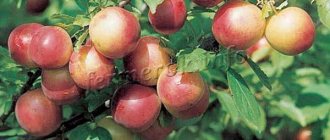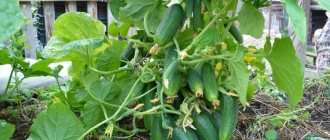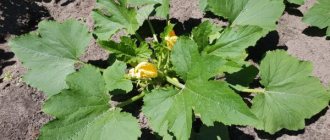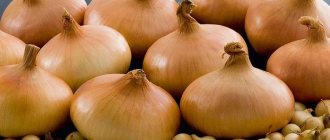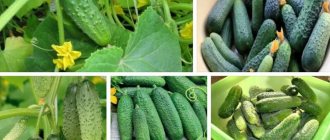Even the most inexperienced gardener can grow black cohosh and decorate their home area with it for many years. This graceful perennial plant belongs to the ranunculaceae family. The elegance of the tall, candle-like flowers makes the plant very popular in landscape design. Flowerbeds, parks and gardens all over the world can be decorated with them. In addition, traditional medicine does not ignore black cohosh and uses it to treat various diseases.
Black cohosh: description
Translated from Latin, black cohosh is “cohosh,” but different peoples called it differently. The green parts and roots of this plant contain insecticides, known to all gardeners as a substance that repels insects, which is reflected in the name of the flower in Russian culture. But in Germany, the plant got its name due to its appearance - “silver candle”.
Black cohosh grows up to 2 meters in height and has tall and powerful flower stalks. The height of the plant depends on the variety, as well as on how the area in which it grows is lit. The height of average specimens is at least 40 centimeters and maximum 1 meter. The older the plant, the more powerful its root system becomes, which goes deep into the ground. Thanks to this, the long-lived perennial is drought-resistant, frost-resistant and can easily tolerate heat.
Black cohosh bushes are covered with large bright leaves from the very base of the stem and are collected in a long rosette. The color of the leaves depends on the type of plant; they can be green, with a red or blue tint, or chocolate-colored with a hint of burgundy. The leaves are jagged, thrice dissected and bear a vague resemblance to large parsley.
A strong shoot, or sometimes two, grow from a rosette on leaves growing at the roots. At its top, a large peduncle is formed, having a cylindrical or elongated pointed shape. The inflorescences are made up of hundreds of small buds and small petals, as well as very long stamens that make the flowers fluffy.
Black cohosh can show different shades on its flowers, depending on the variety of the plant. The opening of flowers occurs gradually, rising from the bottom to the top. Flowering can last more than a month, early species begin to delight with their beauty in mid-summer, and late ones at the beginning or middle of the autumn season.
Black cohosh: varieties and varieties
This perennial plant owes its unattractive name to the fact that it was previously used as an insecticide. It was believed that the unpleasant odor that the leaves emitted when rubbed repelled bedbugs.
Black cohosh is a fairly easy-to-care plant.
The scientific name - black cohosh - translated from Latin also indicates this property. And only the poetic expression “silver candles,” popular among the Germans, reflects the beauty that black cohosh is endowed with. Planting and care do not require special skills, so it has deservedly gained the love of gardeners.
Attention! Black cohosh is considered a poisonous plant. After contact with it, you should wash your hands thoroughly with soap.
In ornamental gardening and landscape design, 10 of the 15 currently existing varieties of black cohosh are used:
- simple;
- branched;
- Japanese;
- racemose, etc.
These varieties have varieties. They differ in shades not only of flowers, but also of foliage, for example:
- Pink Spike - pinkish inflorescences and dark red leaves.
Variety Pink Spike
- James Compton is a combination of cherry leaves and white flowers.
- White Pearl Leaves are light green in color. Inflorescences are snow-white.
Depending on the species, black cohosh blooms in summer or autumn.
Landscape design:
Due to the fact that black cohosh varieties can be of different heights, inflorescences can be of different lengths, and the color palette is quite wide, the plant can decorate various flower arrangements, alpine slides and borders. It can decorate the garden with a bright accent or serve as a background to other colors.
When planting a bush as a single one, you should pay attention to varieties that have tall growth and brightly colored inflorescences. A good option might be: European cohosh, Dahurian cohosh or atropurperia. Using these types you can decorate the shore of a reservoir or decorate walls and fences. Medium-sized black cohosh will look great in flower beds with other, different flowers, and small-sized black cohosh can decorate rock gardens, borders and flower beds.
Low-growing and cover crops can be good complements to black cohosh. Hosta, anemone, perennial moss, and maple leaves can not only make a beautiful frame for black cohosh, but also protect the soil from moisture loss and weed growth. Climbing lungwort can also be used as mulch.
When making a plan for decorating your garden, it is important to consider the proximity of plants. For black cohosh, you need to choose plants that grow under the same conditions as it does and also need the same care. Ferns, aconites, astilbe, buzulniki and sedges will be good neighbors for black cohosh. Coniferous plants can easily enhance its background.
Black cohosh care
Adequate soil moisture is a key factor in black cohosh care. The plant does not tolerate drying out of the soil, especially during the growing season and growth of flower stalks.
Prolonged moisture deficiency leads to a lack of flowering and drying of the leaves. Mulching the soil with a thick layer of compost or shredded bark (chips) around the plantings will prevent rapid evaporation of water and keep the roots from overheating in the hot summer.
Excess moisture also negatively affects the growth and health of black cohosh - the soil should be moist, but not wet.
Mulching the soil after planting black cohosh
As spring feeding, organic matter is used - compost or vermicompost, which is scattered around the plant in April and then watered well.
Despite the fact that black cohosh is completely resistant to frost, it should be covered with fallen leaves or spruce branches in order to slightly delay the spring awakening, since young shoots often become victims of spring frosts.
TOP – 19 unpretentious long-flowering perennials
For the most part, black cohosh is quite resistant to pests and diseases. However, in conditions of high humidity and poor air circulation, fungal leaf spot can develop.
Improving growing conditions and treating with fungicides will help solve the problem. Root rot develops in areas that are too wet and have poor soil permeability.
Cohosh in the garden in a composition with hydrangea
The plant is quite slow growing and may take 3-4 years to reach its maximum size, but the perennial is a long-lived plant and can grace the garden for 25 years or more.
Black cohosh in landscape design
Black cohosh is wonderful as a background in colorful flower beds. As partners, you can choose any plant that grows well in semi-shaded places and prefers slightly moist soils: bright yellow buzulnik, hostas, ferns, balsam, lofan, monarda, foxglove, lavatera and others.
Sedge and moss will help create a natural composition near trees. To fill the voids between coemyfuga bushes, plant large-leaved brunnera, periwinkle or tenacious.
Variety Brunette in composition with hostas and ornamental grass Hakonechloa
The perennial creates a unique composition with bright flowers and graceful ornamental grasses, emphasizing their airy texture.
Plants with bright yellow foliage contrast effectively with the varieties of the Atropurpurea group. The beauty of black cohosh will be emphasized by such shade-tolerant shrubs as: hydrangea, ivy, rhododendron, evergreen mahonia, and kalmia.
Growing black cohosh plant from seeds
Sowing in open ground . Choose a place to grow black cohosh. The soil should contain nutritious organic matter and remain moist at all times, but not wet. Sow the seeds by lightly pressing them into the ground or scattering them over the surface.
The best time to sow is late summer and early autumn so that the seeds can undergo cold stratification and germinate the following spring. However, the germination of seed material is poor, and you may have to wait a whole year for seedlings to appear.
Technology for sowing black cohosh seeds for seedlings at home
- Soak the seeds for 20 minutes in a 10% bleach solution to prevent mold from developing during germination.
- Then place the seed in a sterile, moist potting mix (peat and sand or vermiculite) in a small plastic container with an airtight lid. The soil should cover the seeds in a thin layer.
- Place the container in a warm place at 25°C for 2 weeks. After the expiration date, move the container to the refrigerator and leave for 3 months at a temperature of 1-3 °C. Calculate the time so that sowing is done in early spring.
- After a three-month period, take out the seeds and sow them in a pot on the surface of the soil mixture, since they need diffused light to germinate.
How to grow moss in the garden
- Research has shown that providing seeds with 12-16 hours of light per day will speed up their germination, so it is recommended to use lighting.
- After 3 true leaves appear, the seedlings can be transplanted into separate pots with fertile soil made from universal soil, peat and vermiculite (3:1:1).
- In mid-May, young plants are ready for planting in open ground, but before that, gradually acclimatize the seedlings to the open air.
Propagation by root cuttings
Black cohosh has a strong woody root, it is difficult to separate it, and the cuttings and the mother plant can stop growing for a long time and even dry out.
"Hillside Black Beauty"
It is easier to carefully cut off a root shoot with daughter buds from the mother plant using a sharp shovel. To reduce negative consequences, only adult large specimens that are at least 6 years old are selected for reproduction. It is better to divide the bush in the spring, at the beginning of the growing season.
What fertilizers and when to feed garden plants?
The cut of the cutting is treated with a powder that stimulates root formation, planted in a pot, watered and covered with a transparent bag, simulating the conditions of a greenhouse. They are kept in a greenhouse in partial shade until rooting, after which they are planted with a lump of earth in a permanent place and watered abundantly.
Black cohosh propagation methods:
Perennial black cohosh bushes are easy to propagate and can be obtained in several quantities within a short time. It can be propagated using cuttings, seeds and root division.
The seed method of growing flower and fragrant black cohosh is the most difficult. In order to see the first shoots it will take at least 6 months, and after that you will have to wait a few more years before enjoying the beauty of flowering. With the help of cutting or dividing the bush, all processes occur much faster, but they are unreliable. Temperature changes, bright sun, dry soil, and excess moisture often cause the death of planting material.
Contraindications
Black cohosh is beneficial in treatment and prevention and has virtually no contraindications, but it can also cause harm to people with aspirin intolerance, pregnant and lactating women.
This is a poisonous plant, so self-medication can only cause harm.
For strokes, thrombosis and allergies, take only as prescribed by a doctor. Use cautiously with antihypertensive drugs.
An overdose can cause the following symptoms:
- slow heartbeat,
- dizziness,
- nausea and vomiting,
- osteoporosis,
- constipation,
- vision problems.
Cuttings
It is best to propagate plants using cuttings in the spring. Those that are cut in the fall need warmth, rooting in the house, and more protection, and therefore more time. This method does not cause damage to the bush; in order to propagate it, it is enough to cut off a small part of the shoot containing a pair of buds. You can also use independent sprouts growing around the central root of the plant in adulthood. In order for the cutting to be guaranteed to take root, it must be immersed with a cut in a growth-stimulating solution for several days, and then placed in pre-moistened and loose soil. This method will ensure the fastest development and flowering, which will occur in the same year. As for the mother bush, such procedures are not scary for it.
Black cohosh and menopause symptoms
Beginning in the 1950s, studies using various instructions have attempted to determine whether black cohosh affects menopausal symptoms. Complicating attempts to understand the effectiveness of black cohosh for treating menopausal symptoms is the wide variety of chemical compositions of the drugs. The active ingredients of black cohosh and the potential mechanism(s) of action are unknown. Studies have shown varying results on the plant's effects on human physiology regarding whether it increases, for example, estrogen levels in the body, which is present at lower levels in menopausal women than in premenopausal women, or whether it affects levels of luteinizing hormone or follicles. -stimulating hormone. It is unclear whether black cohosh affects the structure and activity of vaginal and uterine tissue. Some researchers believe that black cohosh may exert its effects through brain-related actions such as modulation of serotonergic pathways, or through its potential ability to act as an antioxidant, anti-inflammatory, or selective estrogen receptor modulator.
Two high-quality randomized controlled trials examining black cohosh and its effects on menopausal symptoms are described here. One, published in 2006, randomized 351 women aged 45–55 years who experienced daytime hot flashes and night sweats into five groups, each group being given different medications:
- 160 mg/day black cohosh (70% ethanol extract standardized to contain 2.5% triterpene glycosides)
- A multi-botanical formulation containing 200 mg of black cohosh along with Siberian ginseng, dong quai and other ingredients.
- Same multi-botanical plus two daily servings of soy products providing 12-20 grams of soy protein
- Hormone therapy (estrogen with or without progesterone)
- Placebo
After 3, 6, and 12 months of supplementation or placebo, the number and intensity of hot flashes and night sweats did not differ between the herbal supplement group and the placebo group, with one exception. After 12 months, participants taking the multibotanical plus soy products had significantly worse symptom intensity than participants taking placebo.
In another randomized controlled trial published in 2009, 88 perimenopausal and postmenopausal women (mean age 53 years; 55% from underrepresented minority groups) who experienced at least 35 hot flashes and night sweats per week were assigned in one of four groups, which were offered:
- 128 mg/day black cohosh (75% ethanol extract standardized to contain 5.7% triterpene glycosides)
- 398 mg/day red clover (ethanolic extract of aerial parts, standardized to 120 mg isoflavones)
- Hormone therapy (estrogen and progesterone)
- Placebo
After 3, 6, 9, and 12 months of supplementation or placebo, the number of vasomotor symptoms decreased significantly in all groups. However, there were no statistically significant differences between the black cohosh and red clover groups compared to placebo, with one exception. The black cohosh group showed worse symptom intensity at 6 and 9 months. This study also examined secondary endpoints such as physical symptoms (eg, insomnia and fatigue), mood changes (eg, depression and anxiety), and sexual dysfunction (eg, vaginal dryness). For most of these outcomes, there were no significant differences between any of the treatment groups at any time.
A 2012 Cochrane review assessed 16 randomized clinical trials of the effectiveness of black cohosh in reducing menopausal symptoms, including hot flashes, night sweats, vaginal dryness, and symptom combinations measured using validated rating scales. (The two trials described above were included in this Cochrane review.)
The 16 included trials randomized a total of 2027 women (mean age 50.5 to 56.4 years) and had samples ranging from 23 to 351 participants. Study duration ranged from 8 to 54 weeks, with a mean duration of 22.8 weeks. Participants received daily dosages of various formulations ranging from 8 to 160 mg/day of black cohosh extract, with an average dose of 40 mg/day. In some cases, the authors of the original research reports indicated that the extract used came from the root/rhizome, they extracted the product with isopropyl alcohol or ethanol, and/or standardized the extract to contain a specific amount of triterpene. glycosides. The studies were quite heterogeneous on factors such as design, duration, type and amount of black cohosh used, and main findings.
A 2021 systematic review and meta-analysis of randomized clinical trials examined four studies of herbal and plant-based treatments that included black cohosh (three of which were studied in the Cochrane review described above) for treating menopausal symptoms. The trial randomized a total of 511 women to receive daily doses of 6.5 to 160 mg/day of black cohosh extract or placebo on various medications. There was no significant association between black cohosh supplementation and a reduction in vasomotor symptoms such as hot flashes. Additionally, there were no favorable associations between black cohosh consumption and relief of menopausal symptoms using self-reported rating scales.
The American College of Obstetricians and Gynecologists, in its 2015 clinical practice guidelines for treating menopausal symptoms, concluded that evidence does not show that herbal dietary supplements such as black cohosh are "effective for the treatment of vasomotor symptoms." The North American Menopause Society advises clinicians against recommending herbal remedies such as black cohosh because "they are unlikely to provide benefit" in relieving vasomotor symptoms.
A Cochrane review found adequate support for further research into the use of black cohosh to treat menopausal symptoms. Its authors recommended that the researchers conduct better tests with larger samples and provide more detailed information about their experimental protocols. Others recommended that the researchers fully and comprehensively describe the black cohosh preparations they used so that other researchers could use the same or similar products. It is also important to independently analyze and verify the composition of the product to ensure its identity and quality.
Dividing the bush
The width of the black cohosh bush increases every year and begins to occupy more space in the garden. When it reaches six years of age, it can begin to be divided into parts and replanted in different areas. To do this, you need to dig it up completely and carefully, without damaging the roots and remembering that they go deep. Next, you need to divide the rhizome into parts without affecting the central part. Each part should have several live buds on the shoots. All parts can be transplanted into a previously prepared area or into a container, allowing the plant to take root better. The plant with the main root can be left where it grew.
Plant varieties
Several types of plants are grown, and all varieties of black cohosh differ in height and color.
Black cohosh is a tall species; inflorescences appear from mid-summer to autumn; they are white or cream.
Branched black cohosh grows up to 2 m, the inflorescences consist of small cream-colored flowers, the leaves are dark and can take on cherry tones. Blooms from early autumn.
Simple black cohosh stands out among other varieties because of its flowering density.
American black cohosh does not grow higher than 1 m, the leaves are bright green, the flowers are soft beige.
Hybrid black cohosh differs in the diameter of the inflorescences; in this variety they are twice as wide as in others.
Black cohosh can be recognized by its unpleasant odor. Due to the shape of the lower leaves, it is called Adam's rib. The inflorescences are usually light green, the plant reaches a height of 2 m.
Seed method
To propagate a plant by seed, you need to have patience and time. It is important to remember that the seeds cannot be stored, so they should be sown immediately, and they also have limited germination. There are some features of growing black cohosh using seeds.
Planting seeds collected in the autumn should be carried out immediately after collecting the seeds and the end of flowering, since leaving it, they will lose their germination.
Sowing black cohosh seeds is carried out in containers filled with loose soil mixture. Next, they are placed in a warm room where the thermometer will not fall below +20 degrees. They must stay there for three months. Watering should not be done frequently, the soil should remain semi-dry.
To prevent the seeds from rotting away, there is no need to create a greenhouse effect by covering the container with film.
After three months, the plants must be moved to a place where the temperature is kept at +16 degrees and kept in such conditions for the same amount of time.
Borings are grown in the same way as regular seedlings. They can be planted in the garden at any period of formation. The main thing is to carry out planting activities after the threat of frost has passed.
The bush will show growth and develop annually, but the first flowering is possible no earlier than after 4 years.
Significant disadvantages of propagation using seeds include the difficulty of growing such a plant in central Russia. This is due to cold and snowy winters. This method will be most suitable in the south of the country.
Decorating the garden with black cohosh
In landscape design, the plant is used both as a single planting and in a group planting. For solo decoration, tall plant species are taken, such as European cohosh and Dahurian cohosh. In rock gardens, low-growing acute black cohosh is more often used, which is never taller than 0.8 m.
Black cohosh is well suited for decorating flower beds and borders, and can be used near ponds or fences.
The plants are successfully used for cutting and for making bouquets.
Any gardener can grow black cohosh. For many years, this plant retains its decorative value, despite minimal care. The main condition is maintaining the level of humidity and light.
Growing: when and where to plant
The foundation for success in growing black cohosh occurs during planting. A perennial plant can develop in one place for 25 years, but does not like to be transplanted. For this reason, it is necessary to take a very responsible approach to choosing a site. If the location is chosen incorrectly or the seedlings are chosen inattentively, then it will be impossible to grow a beautiful flowering plant even with proper planting and care.
When purchasing seedlings or growing them yourself, you need to carefully inspect them before planting them in the garden. Please ensure that there are no signs of disease, damage or dryness. During planting, the plant must have formed buds, the shoots must be strong and healthy looking.
When to plant
Planting activities take place in spring and autumn. Recommendations from experienced gardeners suggest planting the plant after the air warms up to +15 degrees. By planting seedlings in the spring, you can provide them with a longer time for adaptation and good rooting, which means it will be easier for them to survive winter frosts. Also during this time it will be possible to understand whether the correct site was selected.
Place
Cosimfuga is unique in that it will develop well and flower even in semi-shaded areas. This fact is highly valued by gardeners and designers. After all, this allows you to decorate those areas of the garden that could not be decorated with other plants.
Black cohosh likes to grow in partial shade or in areas where the midday sun does not touch the plant.
Soil preparation:
Black cohosh actively grows, develops and blooms profusely for many years, so it needs soil with a lot of nutrients. Soil preparation before planting seedlings must be thorough.
The site must be dug deeply and the soil must be supplemented with sand, peat and mineral fertilizers, if necessary. Lime cannot be added to the soil, since the acidity in the soil is beneficial to the plant. The planting holes should be 60 centimeters apart, go 50 centimeters deep and have the same width. A drainage layer of broken bricks, pebbles or gravel is laid on the bottom. The holes are filled one-third with rotted manure, compost, wood ash or complex fertilizers pre-mixed with the soil. If everything is done correctly, the plant will quickly adapt and begin to develop without requiring additional nutrition for several years.
Rules for planting black cohosh:
Plants are planted after the threat of frost has disappeared and the thermometer shows +15 and above. When planting seedlings, it is necessary to maintain the integrity of the earthen coma. With an open root system, before planting you need to carefully straighten the roots so that they are located evenly and point downwards. After the plant is planted, it is necessary to water it abundantly using warm water. There is no need to compact the soil. Next, a layer of mulch from dry peat, straw and sawdust is applied to the tree trunk circle. Mulching will help maintain soil moisture and stop weed growth.
Please note that the distance between the mulch and the stems should be about 5 centimeters.
Top dressing
Fertilizing is best done with complex preparations.
If all necessary fertilizers were added to the soil during planting, then fertilizers should be applied after the third year of the plant’s life.
After this, you can fertilize black snakeroot annually.
With regular fertilization, black cohosh will bloom better and the bushes will be more luxuriant.
Care:
Caring for black cohosh is quite simple and does not require any special skills. The plant must be watered moderately, fed, pruned and the bushes prepared for the winter cold. These are all activities that will need to be carried out periodically.
Watering
Black cohosh is a moisture-loving plant and does not tolerate drying out of the soil. If the plant is deprived of moisture, the leaves and flower stalks will wither. It is extremely important not to water the plant too much, since stagnant water will lead to the development of putrefactive diseases and the death of the bush.
Watering should not be carried out frequently, but use a large amount of water to feed the horses that lie deep. On hot days, regardless of whether the bush grows in the shade or in the sun, it should be watered twice a week.
Fertilizer application
Black cohosh needs fertile soil, but if you properly apply fertilizer before planting in the garden, then for three years you won’t have to think about nutrition.
In the fourth year of life, the plant must be fed so that it demonstrates lush flowering and all the decorativeness of its leaves. In early spring it will need nitrogen-based fertilizers. During the formation of buds, fertilizers based on potassium and phosphorus must be added to the soil. Organic fertilizers are no less suitable for the plant. Rotted manure can serve as mulch in the fall, when preparations for winter begin.
Mulching
When the plant grows, it does not allow weeds to develop due to the lush rosette of leaf blades, due to which a dense shadow is formed under it. For this reason, you will rarely have to weed the bushes. With the help of mulching, you can significantly simplify all activities related to caring for an ornamental plant. Bulk organic materials in a layer of 5 centimeters will help protect the soil from loss of moisture and maintain its looseness. You can mulch with sawdust, leaves or peat.
Fertilizer and feeding of black cohosh
Cohosh loves fertile soil. During planting, add compost (7 cm layer) and sand (3 cm layer) to the hole. In the future, you need to feed black cohosh for more luxuriant flowering. Once a season will be enough.
Black cohosh does not require frequent feeding
The time to apply fertilizer is early spring. You need to start from the third year after planting. Choose complex mineral supplements. They must contain nitrogen, phosphorus and potassium. For example, Kemira or Aelita Flower-1 fertilizers are suitable for nutritious watering.
Preparatory activities for the winter season:
As an adult, black cohosh can tolerate winter cold well in the Middle Zone. Gardeners who grow it in the Moscow region say that the plant does not need any shelter and tolerates winter well. In those regions where winters are especially harsh or there is not enough snow, the bushes must be covered with spruce branches or dry leaves. In order for the plant to overwinter well, nitrogen fertilizers cannot be used from mid-summer. Nitrogen promotes the growth of green mass, which means that by winter the plant will become weak and will not have enough strength for the winter period.
Trimming:
To prepare black cohosh for winter, simply cut off all the leaves and stems right down to the base. This must be done before the cold weather sets in. The bushes of the first years of life should be covered with a 10 centimeter layer of mulch. This will be especially true in regions where temperature changes and harsh winters often occur.
In order to preserve the decorative appearance of the bush, it is necessary to carry out pruning, thinning the foliage and removing faded shoots. Carry out this procedure during the warm period, when it is convenient for the gardener.
Planting a plant
Black cohosh does better in shade or partial shade than in the sun. Contrary to popular belief, you should not plant it under trees. The perennial prefers soil rich in humus. The place must be protected from strong winds.
Black cohosh will decorate the shady areas of your garden with its flowering
Select planting time in autumn or spring. The depth of the hole is about 30 cm. Loosen the soil at the bottom and add organic matter. Keep the distance between plants at least 60 cm.
Advice. Cohosh does not really like transplanting and grows well in one place for 15-20 years.
Resistance of black cohosh to diseases and pests:
Black cohosh has strong immunity, and if planting and care are carried out correctly, the bush will have enough strength to cope with any diseases and not be damaged by harmful insects. This plant is very resistant to common diseases such as scab and fungus. The disease can make itself felt if the soil is excessively waterlogged. If at this moment the soil is cold enough, then a disease such as powdery mildew will affect the plant. Such conditions arise, as a rule, in the spring during night cooling. As a preventive action, spraying with a solution of copper sulfate is carried out.
Folk recipes
The medicinal properties of cohosh have long been used in herbal medicine for the treatment of many diseases and preventive measures.
- The tincture is used to treat ailments of the cardiovascular system, hypertension, gynecological diseases, vegetative-vascular dystonia, toxicosis in pregnant women . Pour a tablespoon of mashed roots into a glass of alcohol or strong vodka and leave for a week in a dark place. Take 30 drops three times a day with water. The course of treatment is from one to one and a half months. Cranberry juice also helps with cardiovascular diseases; its beneficial properties have long been known to herbalists.
- A decoction of the dried root will help with joint diseases and muscle pain . Boil one root in two glasses of water for about half an hour, use as compresses. Baths with the addition of princely infusion help with joint pain; they will also be useful for neuralgia.
- When treating the gastrointestinal tract, drink an infusion of black cohosh leaves . Prepared from 10 g of raw materials and 500 ml of water: boil for 5 minutes, leave for about half an hour, take 125 ml twice a day.
- The powder from the ground dry root has medicinal qualities and is used for neuralgia, muscle and joint pain.
- Juice from fresh leaves and stems is used in the treatment of skin diseases, scrofula, lichen and mycoses . Soak gauze in juice and apply to sore spots in the form of lotions and compresses.
- A decoction of dry rhizomes is used for skin rashes, toothache, uterine prolapse and PMS in women , toxicosis during pregnancy . Pour 3 g of dried roots into 500 ml of water, bring to a boil and keep on low heat for about 6 minutes, leave for about two hours, drink 125 ml 3-4 times a day. The beneficial properties of strawberries help pregnant women carry a child and alleviate attacks of toxicosis if consumed fresh.
- For menstrual disorders, the healing properties of tea brewed from 1 tsp will help. root in a glass of boiling water.
- For hypertension, inflammation in the oral cavity, hysteria, and neuralgia, take syrup from black cohosh . Prepare in the proportion of 1 liter per 100 g of water and crushed roots, simmer over low heat for two hours, filter and add 100 g of sugar for every 100 ml of liquid. Take 4-6 times a day, 0.5 tablespoons of syrup.
Reasons for lack of flowering:
Black cohosh is decorative already because of its bright, succulent foliage, which is collected into one luxurious bush. However, gardeners who do not yet have experience are often in a hurry to try to find the cause and eliminate it. Often, formed buds do not show their petals for reasons unrelated to care. There are a number of natural reasons for the lack of flowering of black cohosh, these include:
0. Low amount of sunlight due to cloudy weather. The plant grows well in the shade, but if the summer is cloudy, then the buds do not open, but the flower stalks wither.
0. Other reasons include cold spring and a sharp drop in temperature in summer. Black cohosh cannot bloom if the thermometer drops below +15 degrees. At this temperature, branches do not develop and buds fall off.
0. If you do not moisten the soil for a long time and allow the formation of a crust on it, then the plant ceases to have enough nutrients and flowering does not occur.
0. If you plant the bushes in an open sunny area, where the sun will touch the plant all day, or plant it in complete shade, then you should expect nothing more than beautiful foliage. In such conditions, flower stalks do not develop.
The main mistake during care is considered to be too much water in the soil, which leads to rotting of the root system. Also, the lack of necessary nutrients has a bad effect on the condition of black cohosh. If the leaves begin to turn pale, wither or become dry, this signals the need for fertilizing.
Most black cohosh varieties show their beautiful flowers in July, but they open gradually from bottom to top. Those species that are classified as late bloomers are best grown in the south of the country, since in regions with a short warm period the flower stalks do not have enough time to form.
Planting black cohosh in the ground
The beauty of black cohosh is not reflected in its names; only the Germans were able to express the decorative properties of the plant by calling it “silver candles.” They are grown in open ground. The unpretentious culture does not require special care and is not afraid of shade and dampness.
Planting under trees is not advisable; there should be enough free space around the bush. When choosing a place for a flower bed, pay attention to areas protected from the wind. This is due to the height of the peduncle in most varieties; with strong gusts, the shoot may break.
The best time for planting is spring and autumn. The soil for black cohosh must be fertilized. Dig a hole no more than 30 cm deep, lay organic matter on the bottom, then plant a bush. It is necessary to maintain high humidity; the plant is not dry-resistant and may die. The wide leaves at the base of the bush interfere with each other when planted close together; it is recommended to maintain a distance of about 60 cm. The poisonous properties of the grass are known, so be sure to wash your hands after contact with it.
Cohosh does not need a transplant; it feels great in one place for up to 20 years.
